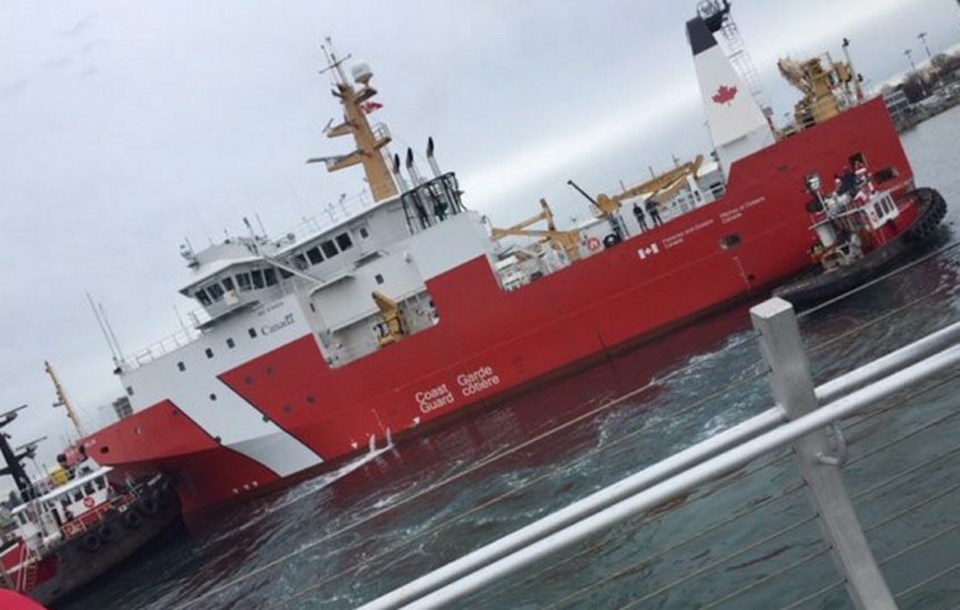The Canadian Coast Guard vessel damaged when it hit the Ogden Point breakwater last month has been repaired and is back in the waters off Vancouver Island.
The 64-metre Sir John Franklin, the newest ship in the coast guard’s fleet, underwent two weeks of repairs in Seaspan Shipyard’s dry dock in Vancouver, giving it a new rudder, rudder post, propeller, tail shaft and steel work on the port stern quarter.
“That this work was completed in a matter of 13 days from the vessel’s docking at our dry dock in Vancouver is a true testament to the capabilities of our integrated marine company here and the leadership being demonstrated across the three shipyards,” said Seaspan Shipyards vice-president Tim Page.
The shipbuilder is on track to deliver the Sir John Franklin by the June 28 delivery date, Page said.
The vessel resumed sea trials off Vancouver Island on April 10 and those will last until April 26.
The Franklin was wrapping up its first week of sea trials when it reversed into the breakwater on March 22. No one was injured and Transport Canada is still investigating what caused the crash. The impact caused superficial damage to a section of the breakwater about 100 metres from the light.
The Sir John Franklin was the first large vessel designed and built under the federal government’s national shipbuilding strategy, the first of three offshore fisheries science vessels being constructed by Seaspan.
The company was chosen in a competition to provide the next generation of non-combat vessels for Canada’s military and coast guard.
The Franklin’s original delivery date of early 2017 was delayed after officials found problems with the ship’s welding, which led to Seaspan redoing some of the work.
Page said the original shipbuilding timeline was overly optimistic, and the company now has a better grasp of how long it takes to construct a state-of-the-art offshore fisheries science vessel.
“We are literally standing up an entire industry here on the West Coast after at least two decades of relative shipbuilding inactivity,” Page said. “The enormity of that challenge and the number of moving pieces that are required in order for the shipyard to be stood up … has taken a considerable amount of effort and time.”
Construction on the second offshore fisheries science vessel is nearing completion, with the launch date set for June 5 from Vancouver Shipyards, Page said. It is set to be delivered to Canadian Coast Guard in November.



